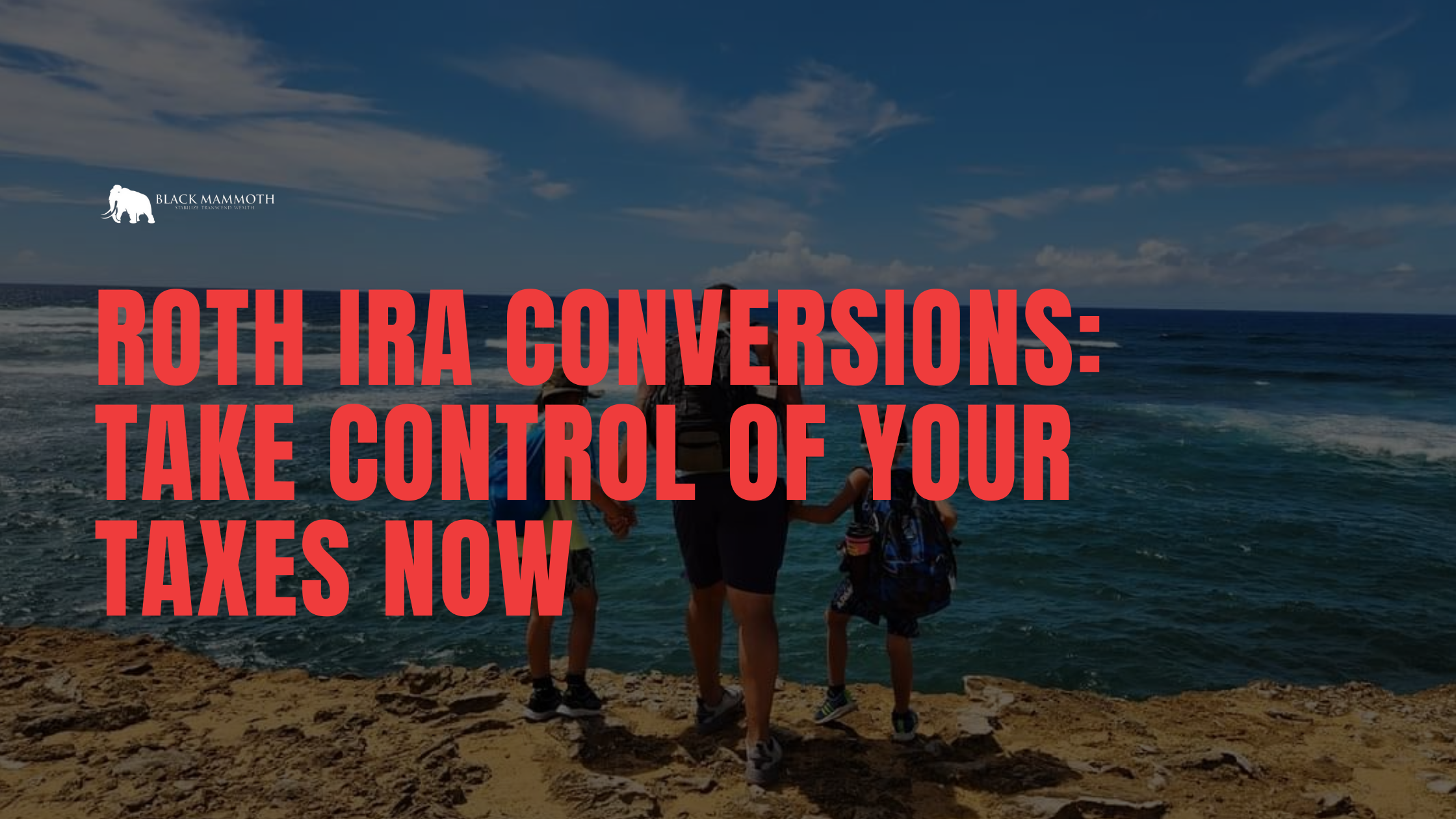Roth IRA Conversions: Take Control of Your Taxes Now
What Nobody Told You About Roth IRA Conversions
Let me ask you something—how much control do you really have over your future taxes?
If you’re sitting there hoping that Uncle Sam will be “gentle” in retirement, I’ve got news for you. Hope ain’t a wealth strategy. A Roth IRA conversion, though? That’s power. That’s taking the wheel, not just riding shotgun while the IRS drives your retirement off a cliff.
But let’s keep it real—Roth IRA conversions can either be a game-changer or a tax-time disaster. Most folks mess this up because they’re moving blind. You don’t need to be one of them.
So buckle up. We’re diving into how to do Roth conversions right, when to strike, and how to keep more of your damn money.
Let’s Start With the Basics: What Is a Roth IRA Conversion?
A Roth IRA conversion is when you take money from a traditional IRA (pre-tax) and move it into a Roth IRA (after-tax). You pay income taxes on the amount you convert now—but from that point forward, your growth and withdrawals are tax-free.
Yeah, you heard that right: tax. free. forever.
It’s like buying out the IRS now, so they leave your retirement alone later. But there’s a catch—timing, strategy, and execution matter like hell.
The Real Question: Is It Worth It?
Here’s the thing. A Roth conversion is not for everyone. If you’re scrambling to cover this month’s bills, don’t do this. But if you’ve got some runway, some strategy, and a desire to build wealth the smart way, keep reading.
It’s worth it if:
You’re still 5+ years from retirement.
You can cover the tax bill with cash-on-hand (not IRA funds).
You want to pass on tax-free assets to your kids or loved ones.
You’re done playing defense with your finances.
Not the move if:
You need the IRA money soon to live on.
You’d have to sell investments or go into debt to pay the taxes.
You expect your income to drop significantly in a few years (and plan to wait for lower rates).
So here’s the question you need to ask:
“Would I write a check today if it meant keeping more of my money for the next 20 years?”
That’s what this is.
Strategy #1: Don’t Convert It All—Play the Tax Bracket Game
Biggest rookie mistake? Converting the whole damn thing in one year and getting steamrolled by taxes. That’s how you trigger surprise bills, Medicare hikes, and an angry call from your CPA.
Do this instead:
Grab last year’s tax return.
Look up your taxable income.
Check how much room you’ve got left before jumping to the next tax bracket.
Only convert that much this year.
This is tax bracket management 101. Use the full range of your current bracket without spilling into the next one.
Action step: Test it out with a tax calculator like this one from SmartAsset: Tax Calculator Tool
Strategy #2: Convert in a Down Year
Had a low-income year? Retired early? Between jobs? That’s your green light.
When your income is lower, your tax rate is sweeter. So converting now means buying out the IRS at a discount.
Example:
You normally make $150K but only made $60K this year. That’s the year to convert $30K, $40K, maybe even more, and stay in a lower bracket.
Pro tip: This is especially juicy for early retirees or business owners who control when and how they take income.
Strategy #3: Offset the Tax Hit Like a Boss
Let’s say you want to convert $25K this year. That adds $25K of taxable income. But you’re not just gonna sit there and take it, right?
Here’s how to fight back:
Charitable donations: Give to a donor-advised fund or charity and deduct that amount.
Tax-loss harvesting: If your investments are down, sell the losers and claim the loss to offset the income spike.
Example: You convert $25K and sell losing stocks for a $10K capital loss. Now you’re only taxed on $15K of new income. Smart. As. Hell.
Strategy #4: Never Use IRA Money to Pay the Taxes
Repeat after me:
Do NOT use the converted IRA money to pay your taxes.
Why? Because:
You lose out on compounding growth.
You could trigger a 10% penalty if you're under 59½.
You’re undoing the whole reason you did this in the first place.
Use cash savings to pay the taxes. If you don’t have it? Hit pause. Build the reserves first. Patience pays off.
But What About the 5-Year Rule?
Ah yes, the fine print everyone ignores until it’s too late.
Each Roth conversion has a five-year clock. That means:
If you’re under 59½ and you withdraw converted funds before that five-year period, boom—10% penalty.
Each year’s conversion has its own clock.
Bottom line: Only convert money you can leave untouched for at least five years.
Roth Conversion Pitfalls That’ll Cost You Big
Let’s hit these landmines head-on, because I see people screw this up every damn year:
Tax Shock
Convert too much and you blow up your tax bill, spike your Medicare premiums, and end up hating Roths forever.
Fix: Break conversions into smaller chunks and spread them over 2–5 years.
Market Timing Fail
Convert at a market high and it crashes after? You just paid tax on dollars that vanished.
Fix: Convert during dips or rebalance into assets you believe are temporarily undervalued.
No Plan for the Taxes
“I’ll figure it out later” is not a tax strategy. That's how people end up liquidating IRAs and triggering even more taxes.
Fix: Budget for taxes before you convert. No surprises.
The Step-by-Step Roth Conversion Playbook
Don’t just wing it. Follow this checklist like your future depends on it—because it does.
Pull your latest tax return.
Find your taxable income and marginal tax bracket.
Model out the tax impact.
Work with a CPA or use a tax calculator.
Choose a reasonable amount to convert.
Start small: $10K–$25K.
Open a Roth IRA (if you don’t already have one).
Set it up so you’re ready to move funds.
Initiate the conversion.
Log into your account. Choose “Roth conversion.” Don’t click “distribution” by mistake.
Pay taxes with outside funds.
No raiding your IRA—use cash.
Keep records.
That 1099-R? Yeah, don’t ignore it. Your tax pro needs it.
Need help with this? Use this straightforward IRS Roth IRA Conversion Guide as your sidekick.
Final Word: Roth Conversions Are a Long Game Move
This isn’t some get-rich-quick nonsense. This is about control. You’re saying:
“I’ll pay taxes now so the government doesn’t eat my lunch later.”
Done right, a Roth conversion gives you:
Tax-free income for life.
Fewer required minimum distributions (RMDs).
More flexibility in retirement.
A powerful legacy for your heirs.
But don’t go in blind. Do it in phases. Do it intentionally. And above all—do it with a damn plan.
What’s Next?
If you’re serious about wealth-building—not just saving a few bucks here and there—Roth conversions might be your secret weapon. But only if you execute smart.
Let’s make it personal. Let’s map it out. Let's make sure you're not guessing. Because this ain’t about theory—it’s about your actual money.
Book a call with the Black Mammoth team now and we’ll help you build a conversion plan that won’t leave you burned or broke.

